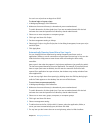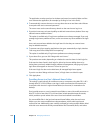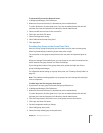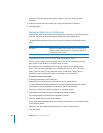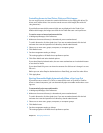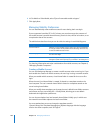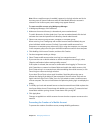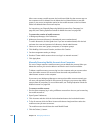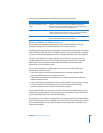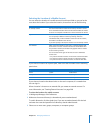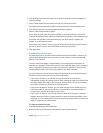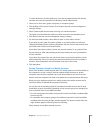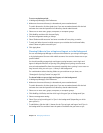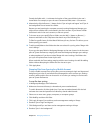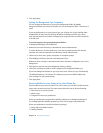
Chapter 10 Managing Preferences 205
6 Choose one of the following home folder options and then click OK.
Enabling FileVault for Mobile Accounts
If your users have computers with Mac OS X v10.5 or later installed, you can use
FileVault to encrypt the local home folders for their mobile accounts.
FileVault encrypts the user’s local home folder using the Advanced Encryption Standard
with 128-bit keys (AES-128). The home folder content is safe even if the user’s computer
is stolen or if an intruder attempts to use the computer while the user is not logged in.
The user’s login password is used to decrypt and give the user access to his or her
FileVault-protected account. If the user forgets the login password and a computer
administrator has set a master password, the administrator can use the master
password to unlock all local accounts.
You can choose whether to require master passwords when enabling FileVault
protection for mobile accounts:
 If you don’t require a master password and there is no master password, local
computer administrators can’t unlock the account.
 If you require a master password and there is no master password, the user can’t
enable a mobile account.
 If you select “Require confirmation before creating mobile account,” the user can log
in with a network account. Network accounts don’t have local home folders
(preventing intruders from accessing home folder content).
If you enable FileVault, you can restrict the size of the local home folder. When you set
a network home disk quota (in the Home pane of a user account), it limits the amount
of space available for the user’s network home folder.
By restricting the size of the local home folder, you prevent the user’s local home folder
from using more space than is available in the user’s network home folder. This ensures
that the home folders can sync without requiring more space than is available in the
network home folder.
Option Effect
Save the home folder in a disk
image
Removes a user account from the local directory domain but
preserves the local home folder in /Users/username.dmg, where
username is the short name of the deleted user.
Do not change the home folder Removes a user account from the local directory domain but
preserves the local home folder in /Users as “username (Deleted),”
where username is the short name of the deleted user.
Delete the home folder Removes a user account from the local directory domain and
permanently deletes the user’s home folders.



